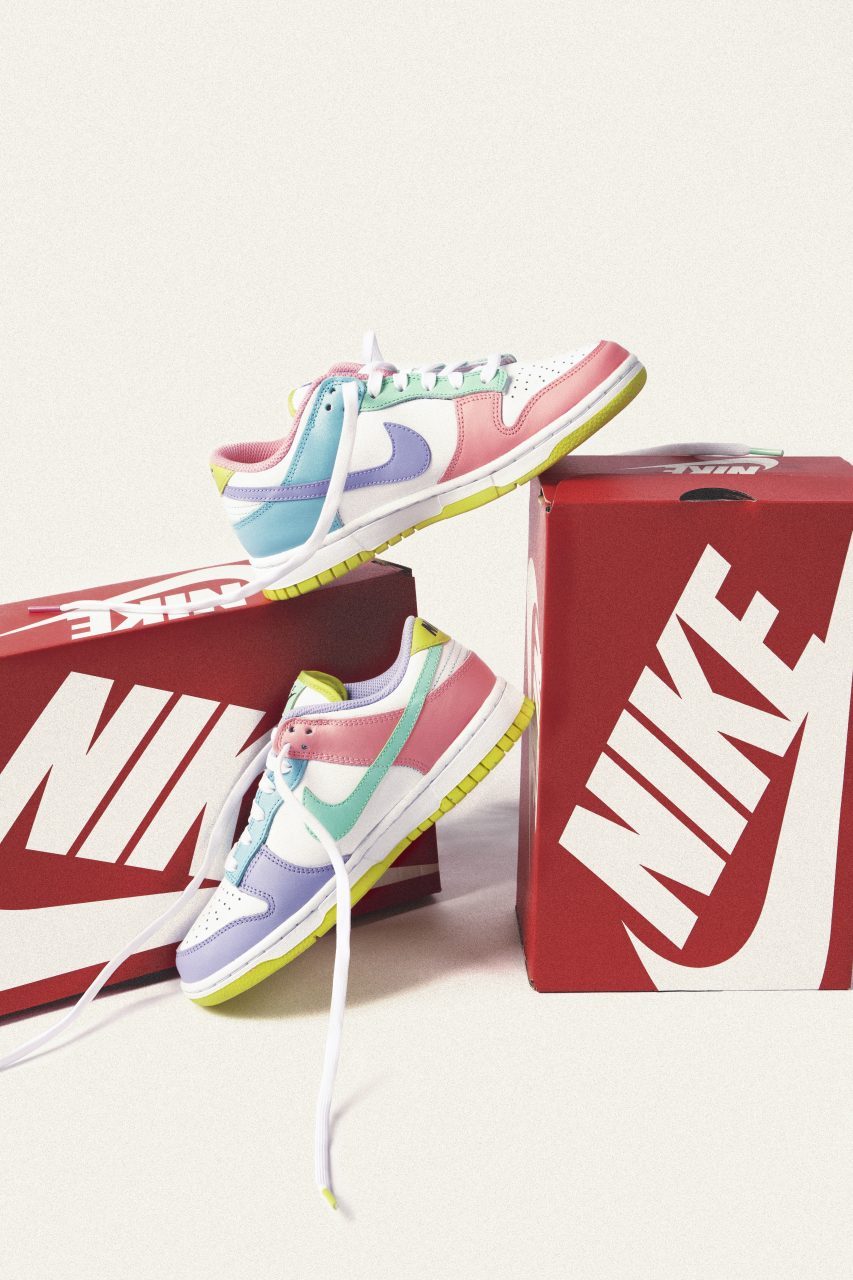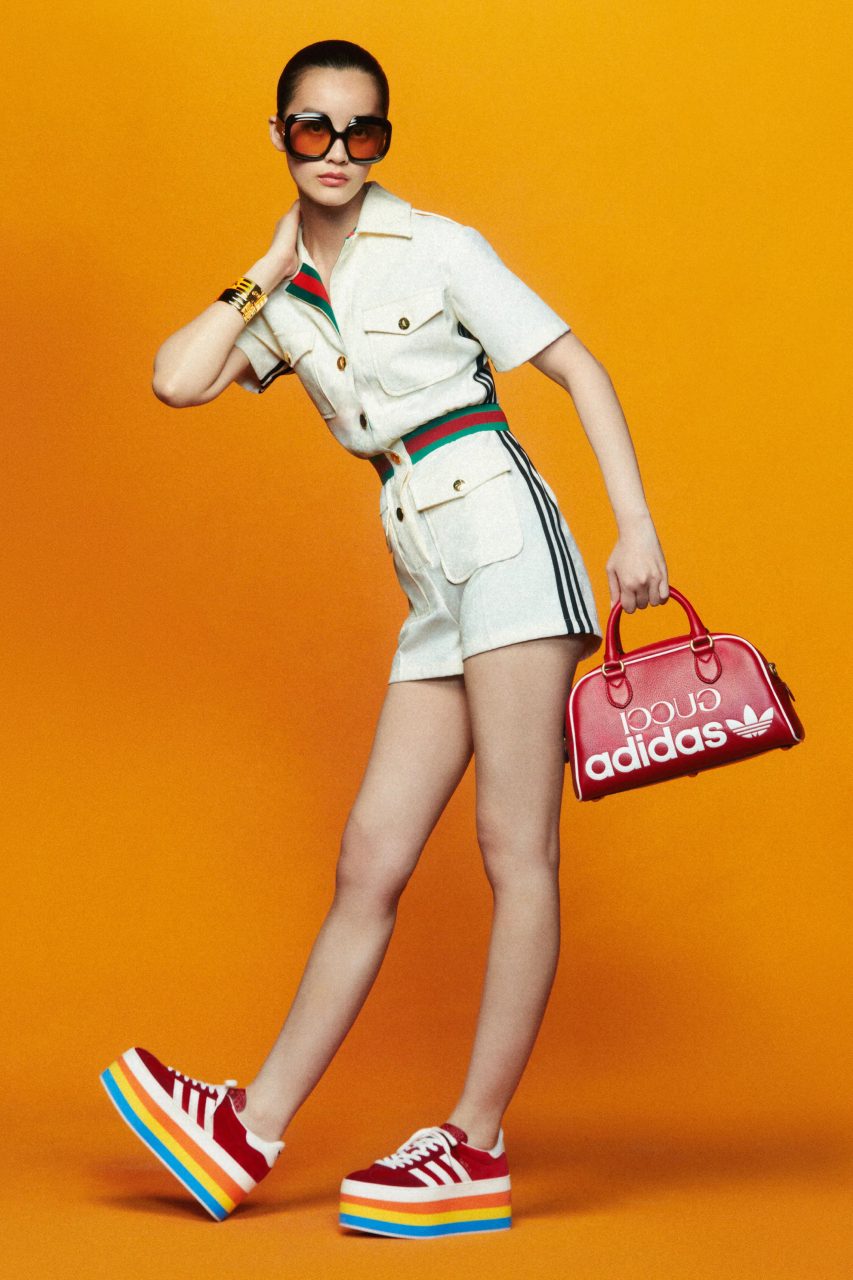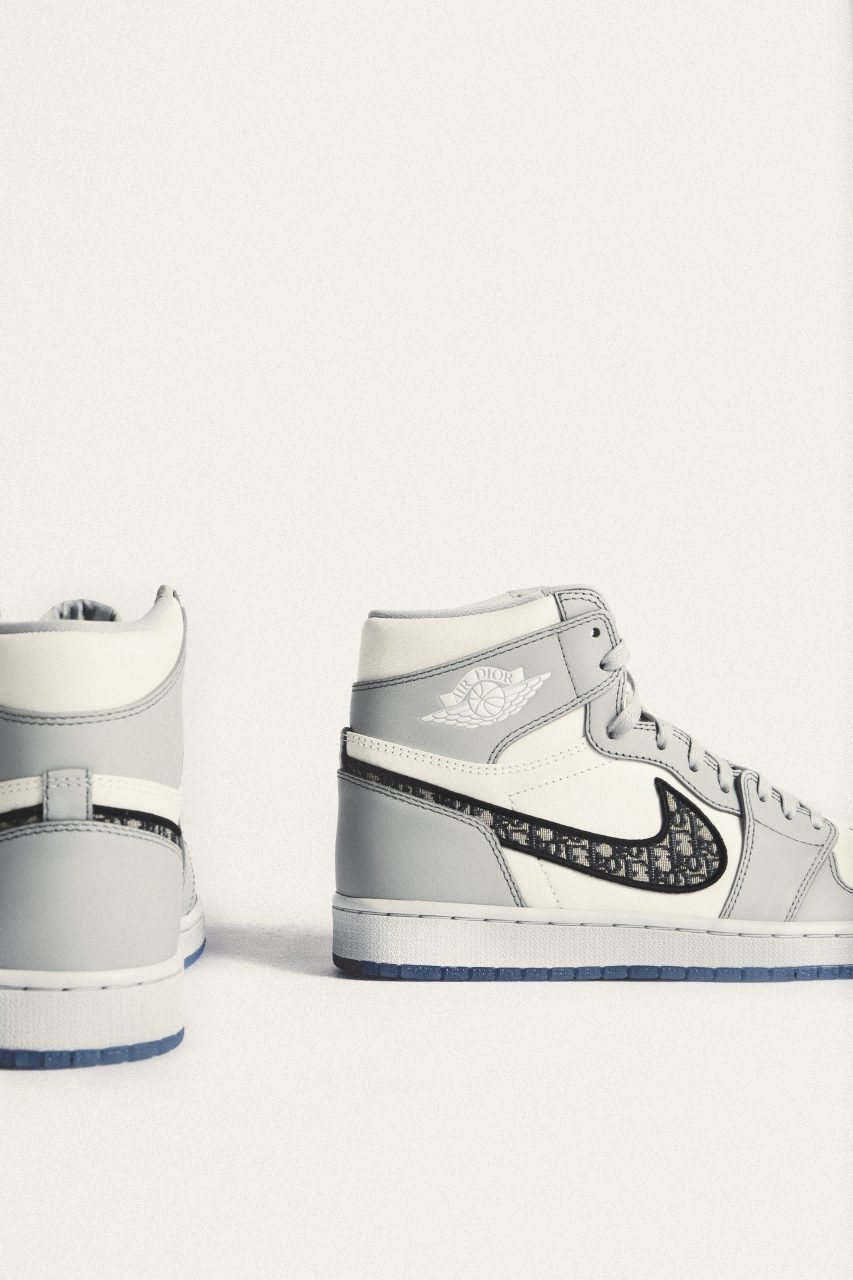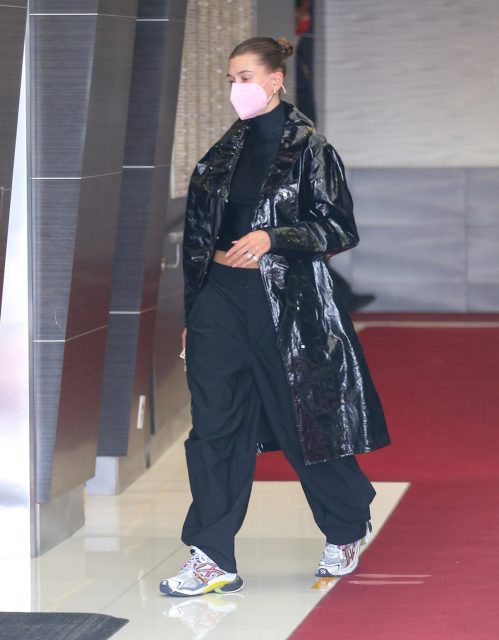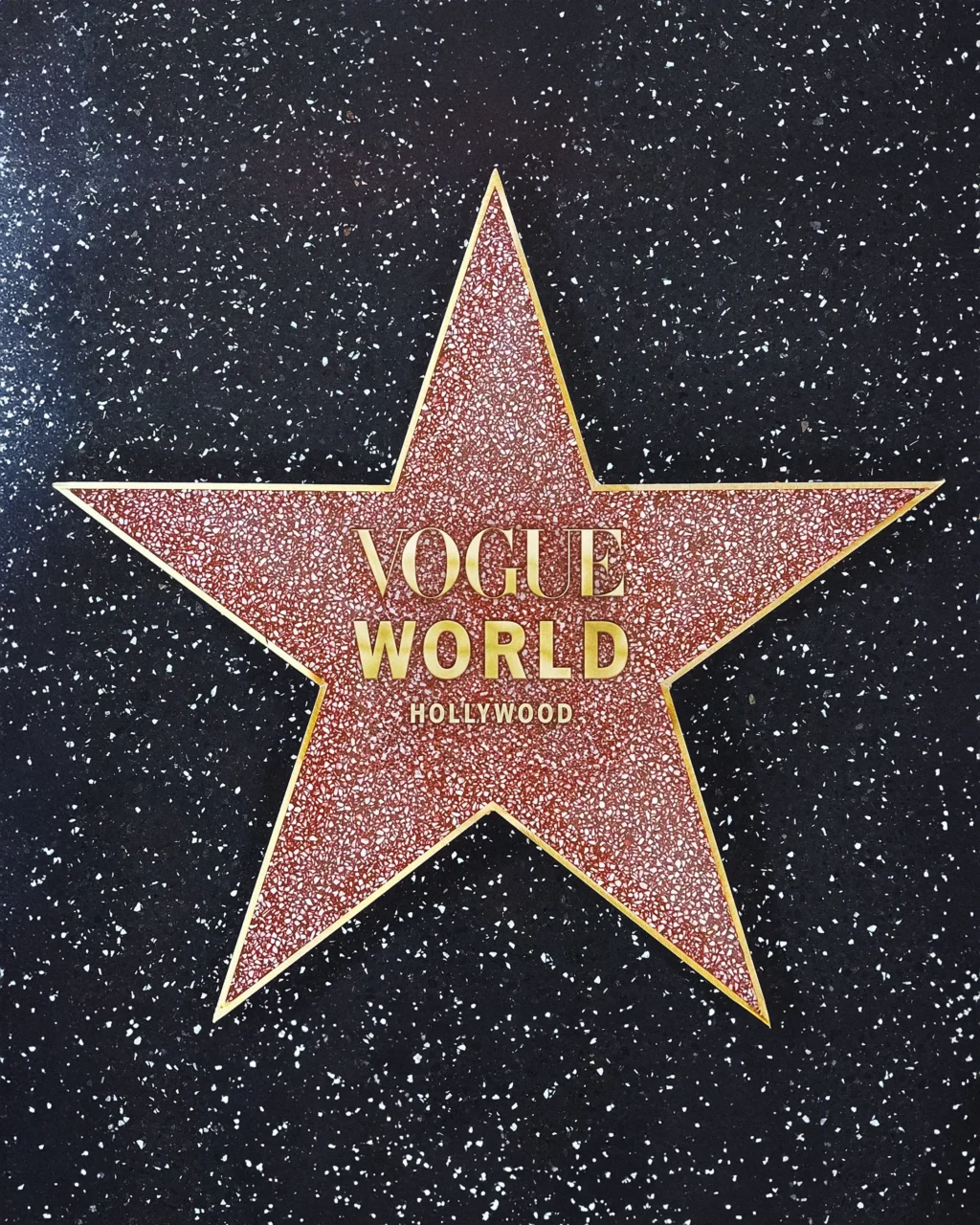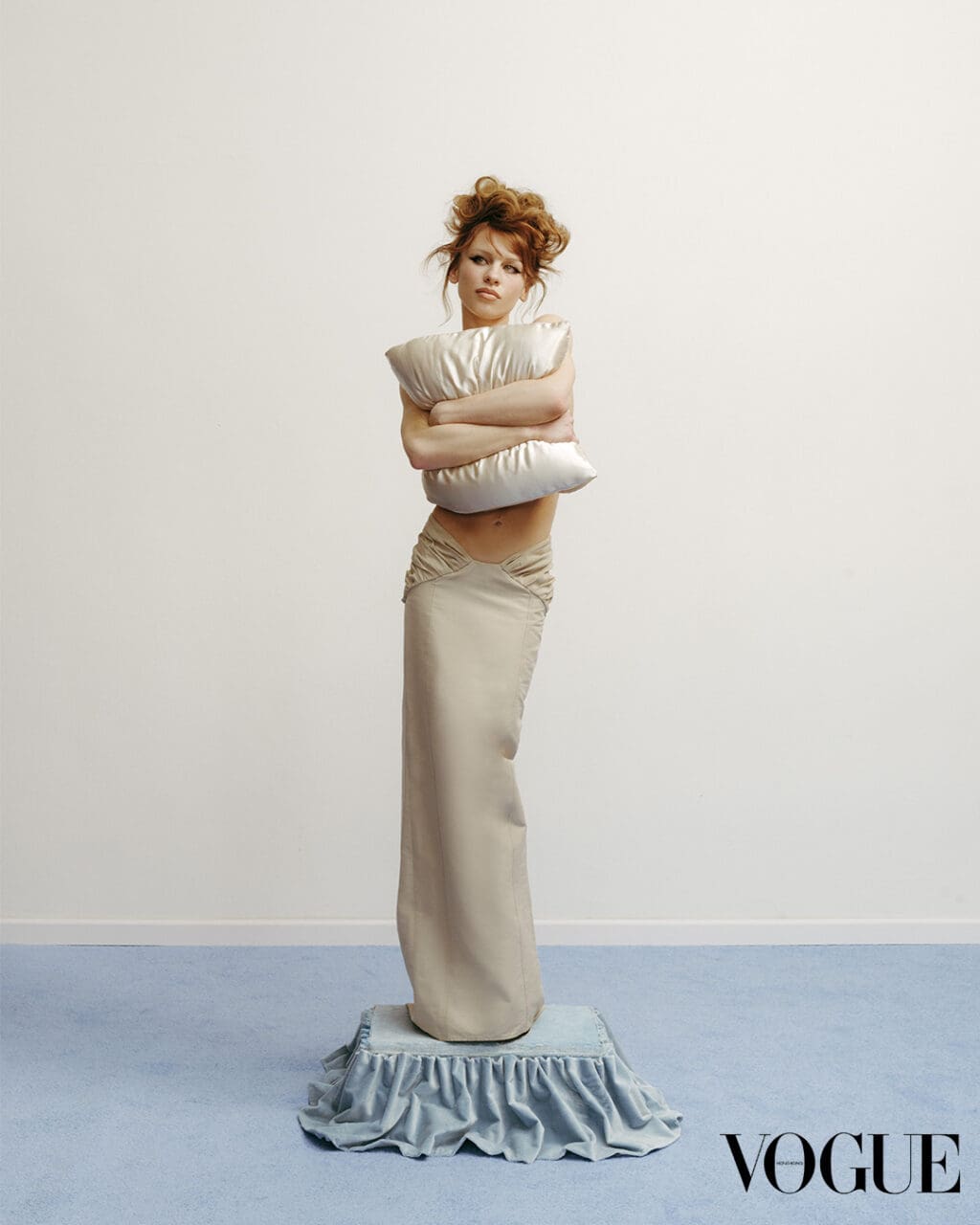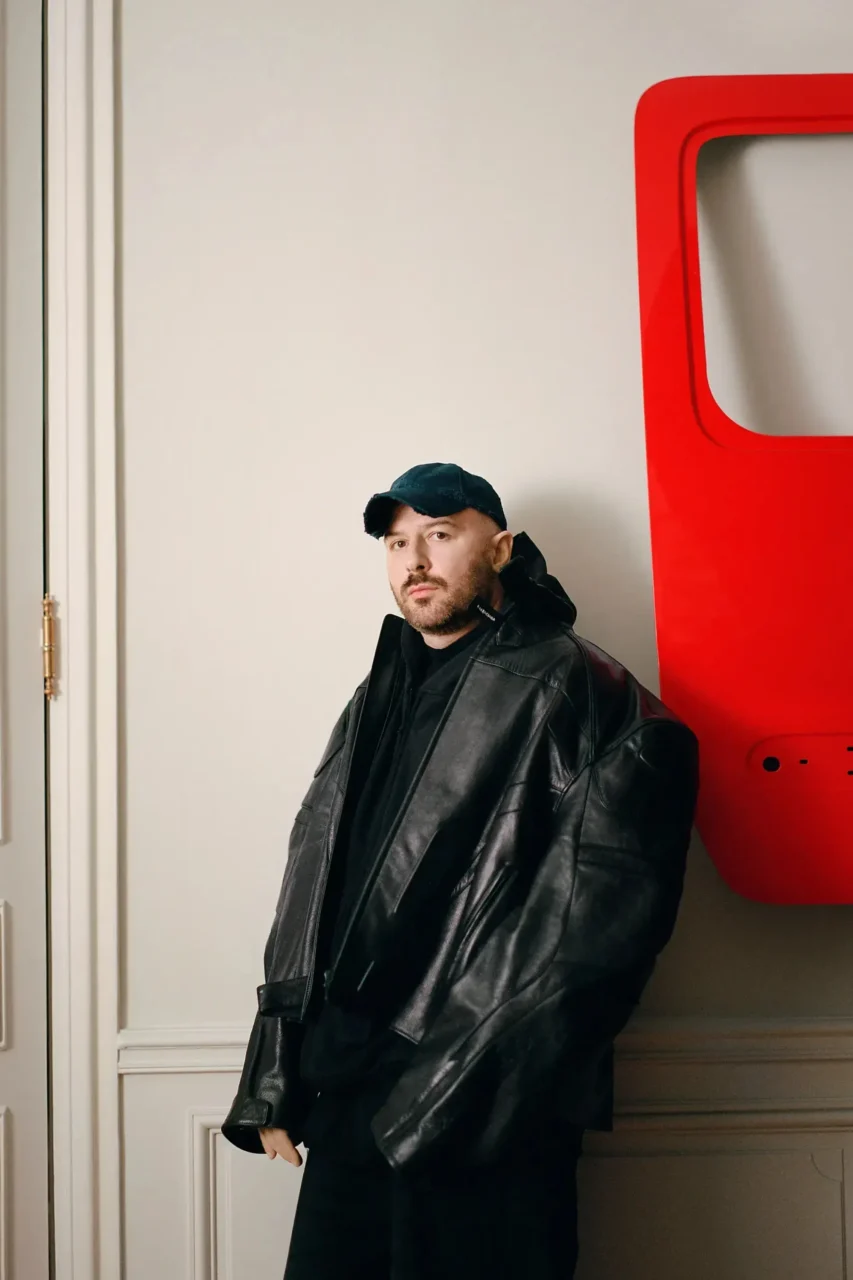What was originally born out of necessity for practical, functional footwear has evolved to become so much more. Now a multi-billion dollar industry, sneakers have found themselves uniquely elevated by luxury brands yet deeply grounded in history and culture. Valued at 79 billion USD in 2020, the sneaker industry is expected to grow to 120 billion by 2026. And that’s just the beginning.
As comfort reigned supreme throughout the pandemic, what was already trending soon skyrocketed, with athleisure nabbing the top spot on trend forecasts and shopping lists. Brands were quick to catch on if they weren’t already on the ball: Adidas first began collaborating with Prada in 2019, while the sportswear giant recently revealed collections with both Gucci and Balenciaga in 2022.
Perhaps the late Virgil Abloh’s storied history with Nike best encapsulates the complex love story between sneaker culture and high fashion. Abloh began working with Nike in 2017, deconstructing 10 sneaker models to create ‘The Ten’, some of the most hype sneakers created to this day, as part of a collaboration with Off-White. “What we’re talking about here is larger than sneakers, it’s larger than design culture. It’s nothing short of state-of-the-art design,” the designer told Nike News. More recently, Virgil introduced 47 pairs of bespoke Nike Air Force 1s in the Louis Vuitton Men’s Spring/Summer 2022 runway show, decidedly melding the rich history of the fashion house with the streetwear culture that shaped him.
Once exclusive and only for those in the know, sneaker drops now top every fashion news site, and coveted pairs that were already difficult to acquire became near impossible. Cue: sneaker resellers. With speedy, tracked shipping, resellers like StockX, Goat or Sneaker Surge can deliver your dream sneakers straight to your doorstep, neatly stamped with a certificate of authentication. But at what cost? And how can they keep up with the crippling demand?
We spoke to Mira Uttamchandani of Sneaker Surge about the rapid growth of sneaker culture, her favourite drops this year and the rising demand from female buyers.
What drew you to this industry? How did Sneaker Surge come about?
Sneaker Surge is the brainchild of my husband Ravine Mahtani. He has always had entrepreneurship in his blood, so when he stumbled upon a pair of sneakers (Yeezys) his friend was wearing, and he couldn’t get his hands on them – he found an opportunity in the market to create a space where people could access highly coveted sneakers.
Mira Uttamchandani wearing Nike Dunk Lows in "University Red"
I studied Design and Management at The New School and have always loved fashion. My experience in the industry ranges from buying, merchandising, product design and brand management to styling. So when COVID hit, I came in as a creative to pivot the business model to an e-commerce lifestyle platform and execute a full rebrand with the help of Maison 024.
View this post on Instagram
Why do you think we’ve been seeing a rise in sneaker culture over the past few years?
There are several factors that have played a role in the growth of sneaker culture. For starters, marketplaces such as Goat and StockX have allowed for increased accessibility and transparency. That, coupled with the rise of the athleisure trend (which was accelerated by COVID-19), has made sneakers more widely accepted. We have also seen an increase in collaborations between streetwear and luxury fashion houses. All of this has put sneakers at the forefront of fashion.
How have you seen the demand for female sneakers change throughout the past few years?
Undeniably yes. I personally attribute this to the many females voices in the sneaker space advocating for change. Women like Aleali May (who designed the Air Jordan 1 “Satin Shadow”), Melody Ehsani who designed the Air Jordan 1 Mid “Fearless” and Chitose Abe (responsible for the collaborations between Nike x Sacai) have disrupted the Sneaker World with not only their designs, but their women’s exclusive sneakers and progressive fashion statements. What was once a “boys only” club is now becoming a more inclusive space for women.
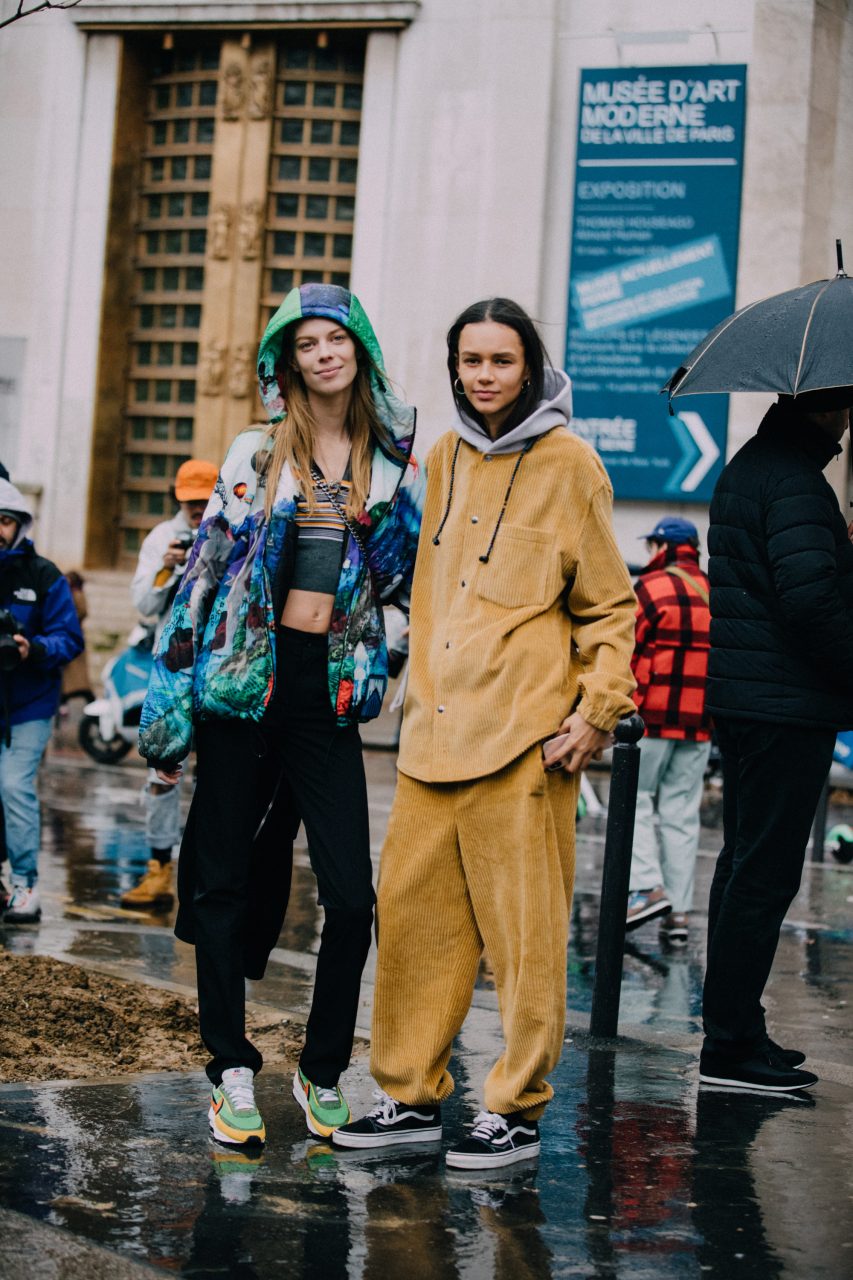
Models Lexi Boling and Binx Walton after the Sacai show. Lexi wears the Nike x Sacai sneakers while Binx is clad in black Vans.
Photo: Melodie Jeng/Getty Images
In parallel, big brands such as Adidas and Nike have made bold promises to champion females by “creating possibilities for women in sport with its commitment to innovation, athletes and future generations” as well launching initiatives such as the “Think Tank Collective” which aims to “improve the experience of girls and women in sport”.
Simultaneously, influential female celebrities from Beyoncé, Rihanna, and Anna Wintour have all collaborated with Adidas, Puma, and Nike respectively, which has not only given women more options in terms of product range, but has encouraged sneakers as a bold, popular and powerful fashion choice.
Do you notice a difference in tastes for sneakers in the Asian markets? If so, how does this differ to their Western counterparts?
The sneaker market overall is influenced by different sub-cultures from art and music to fashion and sports. The difference we’ve noticed is that these sub-cultures hold a different weight globally. In Asia, fashion collaborations with Japanese brands, as well as luxury houses, play a huge role in demand. Sacai x Nike collaborations as well as pairs like the Air Jordan 1 Dior High, do extremely well in this region. In the West, people have a deep rooted connection to basketball and music, so silhouettes like Air Jordan 4’s that have a story and collaborations with musicians like Travis Scott, see a huge demand.
What have been the best drops of the year so far? Are there any that you’re looking forward to?
One of the most anticipated drops this year is the Louis Vuitton and Nike “Air Force 1” by Virgil Abloh which blurs the line between sneaker and art. According to Virgil Abloh “It’s completely not a shoe. It’s an Art Object.”, The collection debut’s 46 iterations of the Air Force 1 which was launched at an exhibition at the Greenpoint Terminal Warehouse in Brooklyn.
Another one of my favourite pairs releasing this year is the Air Jordan 1 High OG ‘Lost and Found’. Chances are, I’m not alone. This pair is likely on every sneakerheads list this Christmas because of its story. Originally coined Chicago reimagined, the pair’s design is inspired by the idea that you could find deadstock (unused) “Chicago 1s” in mom & pop shops in the ’80s. The shoe maintains a distressed and aged looked throughout and is packaged with a vintage invoice.
How do you select which sneakers to stock at Sneaker Surge?
This is honestly my favourite part. I worked in fashion early in my career and trend forecasting, merchandising and personal styling Is something I’ve learnt how to do. We ensure we have all the hottest drops and then beyond that, we look at colours of the year, we look at what celebrities and big luxury brands as well as streetwear are pushing out in terms of fashion and on a macro level – we look at where the economy is. A good example is COVID, many people were at home, and buying a lot of home-wear essentials, so Yeezy slides did extremely well and they continue to do well because people now wear them on flights to travel. We also have a team that monitors, restocks, releases overall demand and sell-through rates.
Can you tell me about some sneakers on your wanted list?
I am definitely more of a “functional chic” sneakerhead and by that I mean, I buy pairs that are extremely lifestyle friendly, fashionable and comfortable. I find myself drawn to collaboration pairs, because I love the product of creative minds coming together. The Aime Leon Dore x New Balance 550 collaborations are a great example of this as well as the Nike x Sacai x Fragment Design collaboration.
View this post on Instagram
What are some sneaker styles that you think will be forever timeless?
There are some sneakers that have already proven to stand the test of time, for example the Air Jordan 1 (1985) which was initially banned by the NBA, making it even more popular, the Air Force 1’s (1982) which is Nike’s best selling silhouette, the Converse Chuck Taylor – All Star (1917) which has become a staple in almost everyone’s closet. More recently we’ve seen the return of the Nike Dunk Low which I believe will also be here for the long run.
What can the industry do to be more sustainable yet still keep up with demand for “hype” shoes?
This is a great question and one of the biggest problems that many brands are trying to solve. “Hype” is associated with luxury, especially with Jordans – however the footwear industry is really pushing for sustainability with their sneaker production. Nike launched the “Move to Zero” campaign, where they aim to achieve Zero Carbon and Zero Waste in production. Within this initiative they released Dunk Lows but at the moment it has not garnered the same demand as other Dunks. I think the messaging and branding around sustainability needs to shift and celebrities need to make “being sustainable cool”.
View this post on Instagram
It can often be incredibly difficult to get a hold of these sneakers. How can brands work to make their launches more inclusive and accessible to all?
In all honesty, if brands made their sneakers more accessible – I believe the demand would fall. It’s human nature to want what you can’t have. However, over the last few years many brands have made more women’s exclusive pairs and included a full size run, from Grade School (kids sizing) all the way to men’s sizing.
How do you ensure authenticity in your sneakers?
Sneaker authenticity is our core value here at Sneaker Surge. We have a team of trained authenticators who verify the legitimacy and quality of every single sneaker that comes into our warehouse. In addition, we’ve built a trusted supply chain over the years, so we know exactly where our product is coming from.
Editor
Carina Fischer